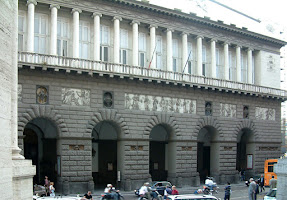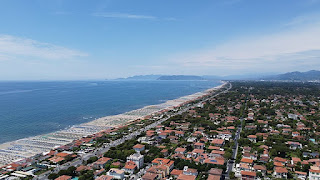Ballet performer inspired Beethoven to compose music to suit his choreography
 |
| Viganò's innovative choreographer helped popularise ballet in Italy |
He introduced the idea of ‘coreodramma’, a synthesis of dance and pantomime, in dramatic ballets based on historical and mythological themes and Shakespeare’s plays.
Viganò was born into a family of dancers and was the nephew of the composer Luigi Boccherini. When he was young, his main interests were literature and music. He studied composition with his uncle, Boccherini, and was composing his own music by the time he was a teenager.
His mother, Maria, Boccherini’s sister, had been a ballerina, and dance gradually became Viganò's main interest. In 1788 he appeared as a dancer on the stage in Venice and the following year he performed in the coronation festivities of Charles IV of Spain.
His elder sister, Vincenza Viganò-Mombelli also became a dancer and she wrote the libretto for Gioachino Rossini’s first opera, Demetrio e Polibio.
While performing in Madrid,he met and married the dancer, Maria Medina. He also met the choreographer Jean Dauberval, who he later joined up with in France and England. His friendship with Dauberval stimulated his interest in choreography.
After dancing and choreographing ballets in Vienna, for a few years, Viganò returned to live in Italy. By 1791 he and his wife were a successful partnership performing all over Italy and he had choreographed his first ballet, Raoul de Crèqui.
| Salvatore Viganò was appointed ballet master at La Scala in 1811 |
Viganò’s ballets were very dramatic and he would often write the music for them himself if he couldn’t find the music he wanted. He tried to select music for his ballets that was appropriate to their themes and he combined conventional dance movements with pantomime. He choreographed more than 40 ballets.
Beethoven composed the music for Viganò’s ballet The Creatures of Prometheus, especially for the dancer, in 1801.
Viganò became ballet master at La Scala in 1811. The theatre in Milan was Italy’s principal opera and ballet theatre and under Viganò’s influence, ballet began to flourish in Italy. A rich female admirer left her entire fortune to him and he was able to concentrate on choreographing and perfecting his ballets with no money worries.
Viganò trained the Neapolitan dancer Carlo Blasis who carried on the traditions that Viganò himself had learnt from Dauberval. The French choreographer had learnt them from Jean-Georges Noverre, who is considered the creator of ballet d’action, the precursor of 19th century ballet. Noverre is considered so important to the art of ballet that his birthday is now observed as International Dance Day and Viganò has gone down in history as providing the vital link in perpetuating his techniques.
Salvatore Viganò died in Milan in 1821.
 |
| Teatro di San Carlo in Naples is the oldest opera house in continous use in Italy |
Teatro di San Carlo in Naples was officially opened in 1737, ahead of La Scala in Milan and La Fenice in Venice. Built in Via San Carlo close to Piazza del Plebiscito, the main square in Naples, Teatro di San Carlo quickly became one of the most important opera houses in Europe and renowned for its excellent productions. The theatre was designed by Giovanni Antonio Medrano for the Bourbon King of Naples, Charles I. The official inauguration was on the King’s saint’s day, the festival of San Carlo, on the evening of 4 November. There was a performance of L’Achille in Sciro by Pietro Metastasio with music by Domenico Sarro, who also conducted the orchestra for the music for two ballets.
Travel tip:
Milan’s Teatro alla Scala, where Viganò served as ballet master, was officially inaugurated in 1778. Known to Italians simply as La Scala, the theatre has become the leading opera house in the world. A fire had destroyed the Teatro Regio Ducale, which had previously been the home of opera in Milan, and a new theatre was built on the site of the former Church of Santa Maria alla Scala, which is how the theatre got its name. Many of the world’s finest singers have appeared on La Scala’s stage during the past 200 years and the theatre has hosted the premieres of operas by Rossini, Donizetti, Verdi and Puccini. The original 18th century structure was renovated in 1907 and, after bomb damage during World War II, it had to be rebuilt and was reopened in 1946. The museum at La Scala has on display a bust of Salvatore Viganò by Lorenzo Bartolini.
More reading:
How the great Carla Fracci changed her mind about ballet
Pierina Legnani’s conquest of St Petersburg
A Neapolitan star who thrilled audiences across Europe
Also on this day:
1867: The birth of poet and librettist Guido Menasci
1874: The birth of politician Luigi Einaudi
1926: The birth of playwright and actor Dario Fo
1934: The birth of photographer Mimmo Jodice
1960: The birth of Bergamo politician Giorgio Gori
_Ritratto_del_coreografo_Salvatore_Vigan%C3%B2,_al_Museo_del_Teatro_alla_Scala,_Milano.jpg)


%20(2).jpg)
.jpg)





.jpg)





